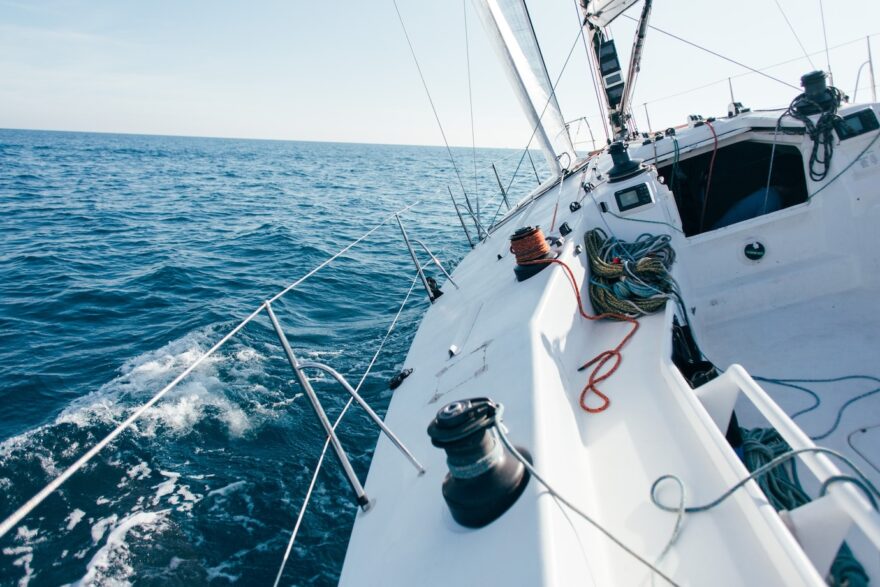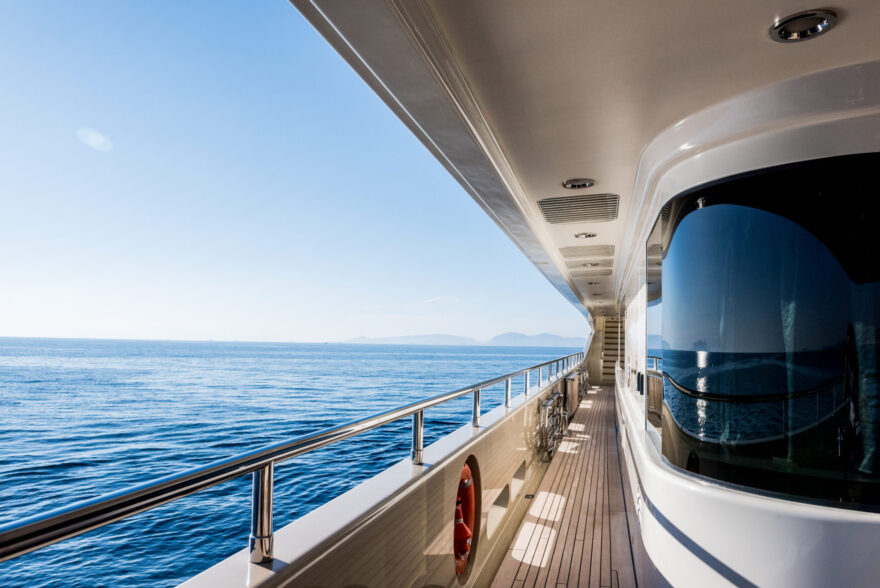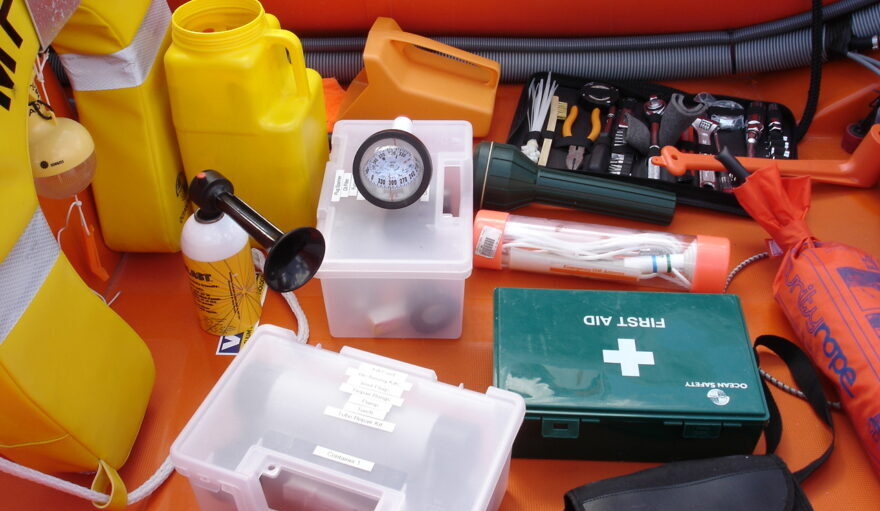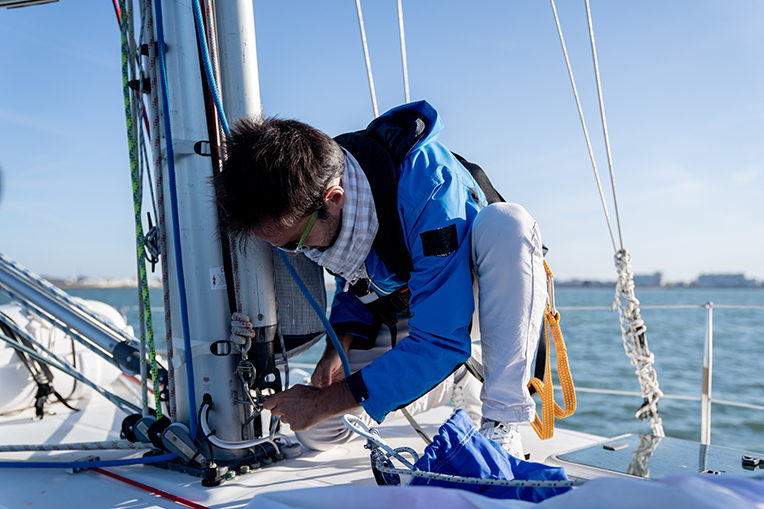Key Factors to Consider When Taking a Superyacht Across the Ocean

Setting sail on a superyacht voyage across the open ocean is a dream shared by many yachting enthusiasts. The allure of exploring remote destinations, experiencing the freedom of the open sea, and the luxury of a superyacht make this an enticing proposition.
However, crossing oceans in superyachts requires meticulous planning, preparation, and an understanding of the unique challenges that come with long-distance cruising.
In this comprehensive guide, we’ll delve into the key factors you need to consider when embarking on a transoceanic journey. Whether you’re an experienced yacht owner or dreaming of your first ocean crossing, this information will help you navigate the complexities of the deep blue.

The first step in crossing oceans on a superyacht is meticulous route planning. Consider factors such as prevailing winds, currents, and weather patterns to chart the safest and most efficient course. Modern navigation technology, including GPS, radar, and electronic charts, will be invaluable for monitoring your progress and ensuring you stay on course.
It’s essential to have contingency plans in place, including alternative routes and safe havens in case of unexpected challenges or emergencies. Additionally, stay updated with the latest maritime charts and navigation information to make informed decisions along your journey.
Weather Forecasting
Weather plays a critical role in ocean crossings. Unpredictable storms, heavy seas, and adverse weather conditions can pose significant challenges. Invest in a reliable weather forecasting system, such as satellite weather services, to receive real-time weather updates and forecasts for your route.
Experienced yacht captains often work with professional meteorologists who provide customized weather reports tailored to their specific voyage. This level of precision can help you avoid rough seas and optimize your route to take advantage of favorable weather conditions.
Safety Equipment and Training

Safety is paramount when crossing oceans on a superyacht. Ensure that your vessel is equipped with the latest safety gear, including life rafts, EPIRBs (Emergency Position-Indicating Radio Beacons), life jackets, and firefighting equipment. Regularly inspect and maintain these items to ensure they function correctly in case of an emergency.
Yacht crew and passengers should undergo safety training and drills to prepare for various scenarios. Knowing how to respond to a man-overboard situation, fire, or abandon ship order can be lifesaving knowledge during an ocean crossing.
Fuel and Provisions
Long-distance ocean crossings require careful fuel and provisioning planning. Calculate your yacht’s fuel consumption based on the expected voyage duration and distance. Ensure you have sufficient fuel reserves to account for unexpected delays or deviations from your planned route.
Provision your superyacht with an ample supply of food, water, and essential supplies. It’s better to have a surplus than to run out of provisions in the middle of the ocean. Consider dietary preferences and any special dietary requirements of your crew and guests.
Crew and Watchkeeping
A successful ocean journey requires a skilled and experienced crew. Assign roles and responsibilities, establish watchkeeping schedules, and ensure everyone understands their duties. Keep in mind that crew members will need to work in shifts to maintain constant vigilance during the voyage.
Crossing oceans can be physically and mentally demanding for crew members, so proper rest and breaks are crucial. Fatigue can lead to lapses in judgment and decreased performance, so adherence to watchkeeping schedules and rest periods is non-negotiable.
Communication Systems
Maintaining reliable communication with the outside world is vital during ocean crossings. Invest in satellite communication systems, including satellite phones and email services, to stay in touch with family, friends, and emergency services. Many superyachts are also equipped with VSAT (Very Small Aperture Terminal) systems for internet connectivity.
In addition to technology, consider establishing regular check-in protocols with shoreside support or a trusted contact who can relay important messages and updates if necessary.
Medical Preparedness
Medical emergencies can occur at sea, so ensure your superyacht is equipped with a well-stocked medical kit and that someone onboard has medical training. Telemedicine services can provide remote medical assistance in case of injuries or illnesses that require expert guidance.
It’s also advisable to conduct pre-departure health checks for all crew members and guests to identify any potential health issues before setting sail.
Regulatory Compliance
Crossing international borders and entering different maritime jurisdictions can involve complex regulatory requirements. Ensure your superyacht complies with all relevant international and local regulations, including safety, environmental, and customs regulations. Carry the necessary documentation, permits, and licenses for your voyage.
Maintenance and Reliability

Prior to embarking on an ocean crossing, conduct thorough maintenance checks on your superyacht’s systems, machinery, and equipment. Ensure that everything is in optimal working condition to minimize the risk of mechanical failures during the voyage.
Routine maintenance during the crossing is also essential. Regularly inspect and service critical systems, such as engines, generators, and navigation equipment, to prevent unexpected breakdowns.
Experience and Expertise
Crossing oceans in a superyacht is not for the inexperienced. It requires a high level of seamanship, navigation skills, and an understanding of the unique challenges posed by long-distance cruising. If you lack the necessary experience, consider hiring an experienced captain or crew who are well-versed in ocean crossings.
Enjoy the Journey
While safety and preparation are paramount, it’s equally important to savor the journey. Crossing oceans on a superyacht offers a unique opportunity to connect with the natural world, witness breathtaking sunrises and sunsets, and experience the tranquility of the open sea. Take time to enjoy these moments and create lasting memories.
If this is your first time on a superyacht or on a boat in general, you may experience motion sickness. But, you shouldn’t worry anymore because we’ve got you covered. Our article about Alaska cruises for families will help you understand how to go about motion sickness. So, what are you waiting for? Let’s get ready to set sail.

